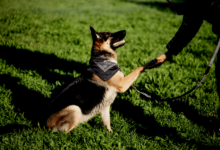
Traveling with Pets: Safety Tips for Road Trips & Flights
"Traveling with pets? Discover essential safety tips for road trips and flights to ensure a stress-free journey for you and your furry friend."
Traveling with pets can transform a routine journey into an unforgettable adventure, but it requires thoughtful planning to ensure safety and comfort. Whether embarking on a cross-country road trip or navigating the complexities of air travel, understanding the unique needs of your furry companion is essential. “Traveling with Pets: Safety Tips for Road Trips & Flights” isn’t just a guide—it’s a roadmap to mitigating stress, avoiding hazards, and creating positive memories. Pets, much like humans, thrive on routine and familiarity, so disrupting their environment without preparation can lead to anxiety or health risks. This article delves into practical strategies for both modes of travel, emphasizing proactive measures that prioritize your pet’s well-being.
The bond between pets and their owners often makes leaving them behind unthinkable, yet travel introduces variables that demand attention. From securing the right carrier to recognizing signs of distress, every detail matters. By blending expert advice with real-world insights, this guide aims to equip pet owners with the knowledge to navigate highways and airports confidently. Let’s explore how to turn travel challenges into opportunities for connection and joy.
Road Trip Safety: Preparing for the Open Road
Road trips offer flexibility, making them ideal for pet owners who want to maintain control over their companion’s environment. However, the allure of spontaneity must be balanced with structure. Begin with a pre-trip veterinary visit to ensure vaccinations are up-to-date and discuss motion sickness or anxiety remedies. Obtain a health certificate if crossing state lines, as some regions require documentation. Pack a dedicated pet kit: food, bottled water, medications, waste bags, a first-aid kit, and familiar items like blankets or toys to provide comfort.
Securing your pet in the vehicle is non-negotiable. Free-roaming pets risk injury during sudden stops and distract drivers. Invest in a crash-tested harness, carrier, or travel crate sized appropriately for your pet’s breed. Position the carrier in a stable, shaded area of the car, avoiding airbag zones. For larger dogs, install a pet barrier in SUVs or trucks. Acclimate your pet to the carrier weeks before departure by gradually increasing crate time during short drives, pairing the experience with treats and praise.
Frequent breaks are crucial. Plan stops every 2–3 hours for hydration, bathroom needs, and light exercise. Use a leash or portable playpen to prevent escapes in unfamiliar areas. Never leave pets unattended in a parked car—even with windows cracked, temperatures can soar to lethal levels within minutes. Use sunshades and climate control to regulate the cabin, and consider a backseat fan for airflow. Monitor your pet for excessive panting, drooling, or lethargy, which signal overheating.
Post-trip care often goes overlooked. After arrival, offer water and a quiet space for your pet to decompress. Inspect paws for debris or irritation, especially after hikes or walks on hot pavement. Gradually reintroduce their regular feeding schedule to avoid digestive upset.
Air Travel: Navigating the Skies Safely
Air travel introduces unique challenges, from stringent airline policies to the stress of unfamiliar noises and confinement. Start by researching pet-friendly airlines. Policies vary widely: some allow small pets in-cabin, while others restrict animals to cargo holds. Brachycephalic breeds (e.g., pugs, bulldogs) face higher risks due to respiratory issues, prompting many airlines to ban them from cargo. Book direct flights to minimize layover stress and avoid extreme weather travel, as temperature restrictions may delay your pet’s journey.
Selecting an airline-approved carrier is critical. For in-cabin travel, soft-sided carriers must fit under seats, while cargo crates require ventilation, sturdy handles, and “Live Animal” labels. Line the carrier with absorbent padding and include a secure food/water dish. Freeze water to prevent spills during security checks. Attach a visible pouch with your contact info, a recent photo, and flight details.
A pre-flight veterinary check is advisable, particularly for senior pets or those with chronic conditions. Discuss sedation cautiously, as altitude can amplify side effects. The American Veterinary Medical Association discourages sedation unless absolutely necessary, as it may impair balance or breathing. Instead, use natural calming aids like pheromone sprays or anxiety wraps.
During the flight, communicate with cabin staff to confirm your pet’s status. For cargo pets, ensure the crate is USDA-approved and includes feeding instructions. Post-flight, reunite calmly—your pet may be disoriented or agitated. Offer water immediately and monitor for signs of stress or illness over the next 48 hours.
Universal Tips for Stress-Free Journeys
Regardless of travel mode, identification is paramount. Microchip your pet and ensure registry info is current. Attach a travel tag to their collar with your destination address and a temporary phone number. Carry digital and physical copies of medical records, including rabies certificates and prescriptions.
Anxiety management benefits both pet and owner. Familiar scents, like an unwashed t-shirt, can soothe nervous animals. Practice short trips to build tolerance, rewarding calm behavior with treats. For severe anxiety, consult a vet about behavioral training or supplements.
Emergency preparedness is often overlooked. Research veterinary clinics along your route or near your destination. Pack a pet first-aid kit with gauze, antiseptic wipes, tweezers, and a pet-safe antihistamine. Know basic CPR for pets and recognize symptoms of heatstroke or poisoning.
Read More: Common Pet Health Problems and How to Prevent Them
Conclusion
Traveling with pets can be a rewarding experience, but it requires careful planning to ensure their safety and comfort. Whether you’re hitting the road for a scenic drive or taking to the skies for a long-distance journey, understanding your pet’s needs is crucial. “Traveling with Pets: Safety Tips for Road Trips & Flights” is a comprehensive guide designed to help pet owners navigate the challenges of travel while keeping their furry companions safe and happy. From securing the right travel gear to recognizing signs of stress, this guide covers everything you need to know to make your trip as smooth as possible.
The key to successful pet travel lies in preparation. For road trips, this means packing essentials like food, water, and a first-aid kit, as well as ensuring your pet is safely restrained in the vehicle. For air travel, it involves researching airline policies, choosing the right carrier, and acclimating your pet to the new environment. By taking these steps, you can minimize stress and create a positive travel experience for both you and your pet.
Traveling with pets doesn’t have to be a daunting task. With the right preparation and a focus on safety, you can ensure that your furry friend enjoys the journey as much as you do. Whether you’re embarking on a road trip or flying to a new destination, the tips and strategies outlined in this guide will help you navigate the challenges of pet travel with confidence.
Remember, every pet is unique, and their needs may vary depending on their age, breed, and temperament. By staying attuned to their cues and making their comfort a priority, you can create lasting memories and strengthen the bond you share. So pack your bags, grab your pet’s favorite toy, and get ready for an adventure that you’ll both cherish for years to come.
FAQs
1. How often should I stop during a road trip with my dog?
Plan stops every 2–3 hours for bathroom breaks, hydration, and light exercise. Adjust based on your pet’s age and health—puppies and senior dogs may need more frequent pauses. Use rest areas with pet-friendly zones for safe off-leash time.
2. Can I sedate my pet for air travel?
Sedation is generally discouraged due to altitude-related risks. Consult your vet for alternatives like calming treats or pheromone sprays. Exceptions may apply for pets with severe anxiety, but medication must be tested before travel.
3. Are certain dog breeds banned from flights?
Yes. Many airlines restrict brachycephalic breeds (e.g., bulldogs, pugs) from cargo due to breathing issues. Check airline policies in advance, as some may allow them in-cabin if they fit under seats.
4. What documents do I need for international pet travel?
Requirements vary by country but often include a health certificate, rabies vaccination proof, and import permits. Start preparations months ahead, as some nations mandate blood tests or quarantine periods.
5. How can I keep my cat calm during travel?
Use a familiar carrier lined with their bedding. Cover the carrier with a light cloth to reduce visual stress. Play soft music and avoid sudden movements. Gradual acclimation to the carrier weeks before travel can significantly lower anxiety.






